Light and Biophysics
Conversation with Lluís Torner
 On 20 December 2013, the United Nations’ General Assembly proclaimed 2015 as the International Year of Light and Light-based Technologies (IYL 2015), “stressing that enhanced global awareness of and increased education in the science and technologies of light are vital for addressing challenges such as sustainable development, energy and community health, as well as for improving the quality of life in both developed and developing countries“.
On 20 December 2013, the United Nations’ General Assembly proclaimed 2015 as the International Year of Light and Light-based Technologies (IYL 2015), “stressing that enhanced global awareness of and increased education in the science and technologies of light are vital for addressing challenges such as sustainable development, energy and community health, as well as for improving the quality of life in both developed and developing countries“.
Biophysics is one of the many scientific disciplines strongly influenced by the progressive advance of light science and technology. Indeed, the central act of observing a biological system is invariably enabled by some form of light. To talk about light and biophysics I visit Lluís Torner at The Institute of Photonic Sciences (ICFO) in Castelldefels (Barcelona). Dr. Torner is Full Professor at the Universitat Politècnica de Catalunya (UPC), Founder and Director General of ICFO since its creation in 2002 and member of the Photonics21 Board of Stakeholders, a European technology platform representing the European photonics community of industry and research organisations.

Professor Lluís Torner.
Spain has a significant weight in the European photonics community. Torner comments that the wide-scope approach of ICFO quickly made it a reference in Europe, where photonics centres tend to be highly specialised. Nevertheless, he makes me note that ICFO only covers a small fraction, however wide, of the photonics field, and this responds not only to the size of the centre but also to the costs associated to some research areas. Some topics require large, sustained investments that one cannot realistically expect in our country. “The Institute has therefore selected areas in which it is possible to compete at the highest international level using the resources that we have available”. And he adds: “happily, biophotonics is an area that combines relatively low funding requirements with the possibility to be extremely creative”.
The application of new light technologies to the observation of biomolecules and biological systems and to the study of dynamic processes in them is, Torner confirms, a hot topic in photonics:
Light is a perfect tool resource for biophysics as it provides means to observe and manipulate things at scales that are very difficult to access with other “instruments”, especially if you are looking for a non-invasive technique that will not alter the sample.
Thus, “although light gives less resolution than other instruments (e.g. synchrotron radiation), it allows you to manipulate −stretch, etc.− a biological sample without destroying it. Moreover, if you want to observe a process taking place inside a living cell, light may allow you to do the observation in the relevant time frame without killing the cell or altering the process.” Torner points out that the high impact that photonics is having in Biology and Medicine is illustrated by the joint award of the Nobel Prize in Chemistry 2014 to Eric Betzig, Stefan W. Hell and William E. Moerner “for the development of super-resolved fluorescence microscopy”, that is, for circumventing Abbe’s diffraction limit for an optical microscope.The driving force for new advances will continue to be the need to observe processes in vivo.
In most cases, we learn about new technologies applicable to our research only when they are close to available –nothing wrong with that. Lluís Torner is in this sense in a privileged position. He has participated in the elaboration of the Photonics Multiannual Strategic Roadmap 2014-2020 “Towards 2020 – Photonics Driving Economic Growth in Europe”, developed by Photonics21 in partnership with the EU Commission and outlining the research and innovation priorities for the period. It comes as no surprise, therefore, that I end up asking him how will photonics push the current limits of biophysical research in the coming years. He quickly answers that the driving force for new advances will continue to be the need to observe processes in vivo –or under functional conditions. Within this context, he distinguishes two research directions in continuous development. The first one focuses on the observation of ever-smaller things –down to molecules− at ever-higher resolution. He notes, however, that higher resolution means also smaller observation area and therefore a loss of context. The second one focuses on the observation of ever-larger things –up to small organisms such as embryos− at a given sufficient resolution. The priority in this case is to see the full context in which the biological process is taking place. In either direction, there is plenty of room to go.
Quantum phenomena are for obvious reasons central to photonics research. Out of curiosity, I ask Lluís Torner if any of the quantum research performed at ICFO belongs to the biophysics domain. Photons, quantum effects and biology; the answer is of course photosynthesis and, the approach, ultrafast single-molecule techniques. “The ultrafast and directional transport of excitation energy in the initial steps of photosynthesis is not yet understood in full detail. Imagine the implications of understanding such a highly efficient and robust system for the transfer of energy.” The words of the United Nations proclamation of IYL 2015 come back to my head: “…for addressing challenges such as sustainable development, energy and community health…”, and I realise for the nth time that I should be talking more often to people out of my field of research.
Director General of ICFO – The Institute of Photonic Sciences
Mediterranean Technology Park
Av. Carl Friedrich Gauss, 3
08860 Castelldefels (Barcelona), Spain.
E-mail: director@icfo.eu
Institute of Biotechnology and Biomedicine – IBB
Universitat Autònoma de Barcelona, Campus UAB
08193 Cerdanyola del Vallès (Barcelona), Spain.
E-mail: Xavier.Daura@uab.cat
